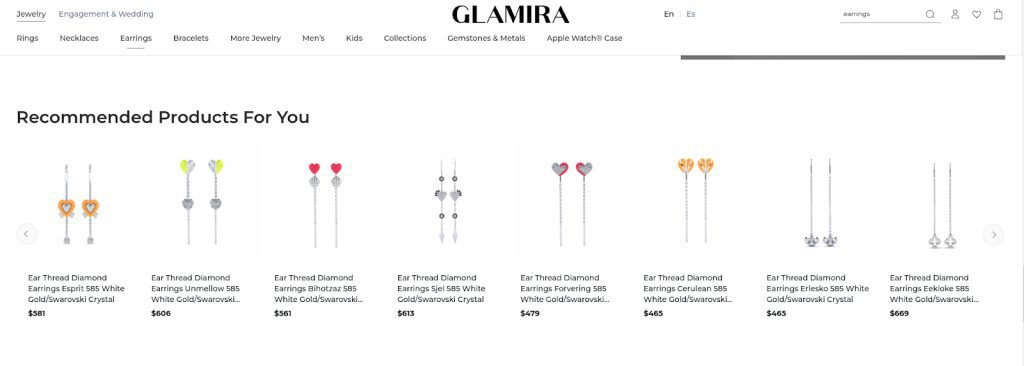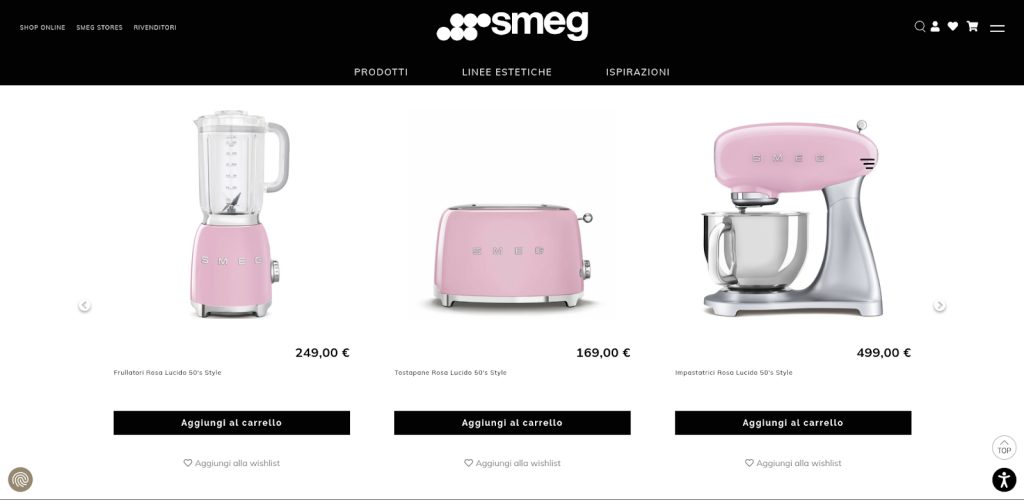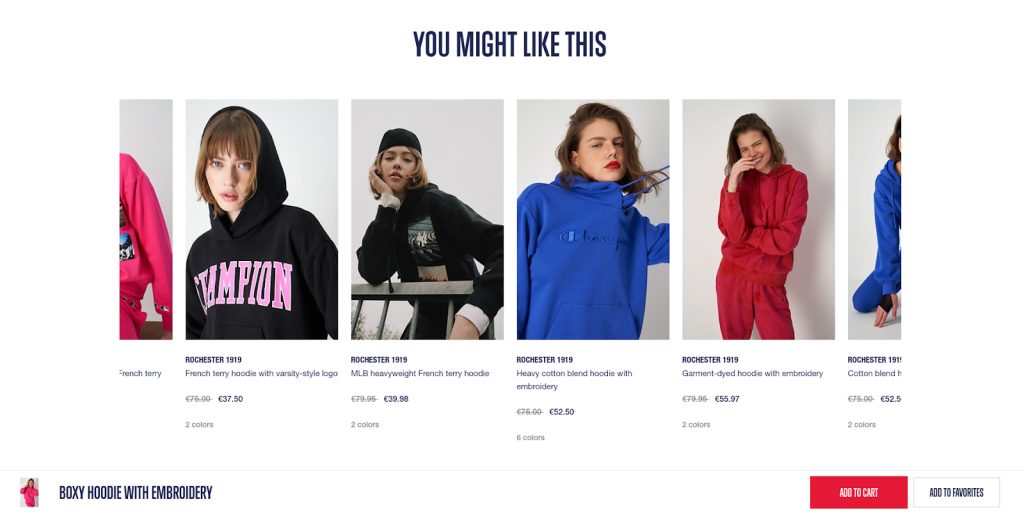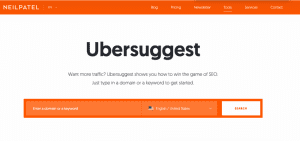CONTENTS
Guiding customers to the right products isn’t just helpful, but it’s expected, especially in the current age of online shopping.
Ecommerce product recommendations play an important role in the online shopping journey, acting as virtual assistants to enhance the shopping experience.
Think of it as replicating the expertise of an in-store salesperson online.
By analyzing customer data—like browsing behavior and purchase history—recommendation engines offer tailored suggestions that align with individual preferences, ultimately driving conversions and increasing customer satisfaction.
Whether it’s suggesting complementary items or personalizing recommendations based on past interactions, the goal remains consistent: to streamline the shopping journey and boost engagement.
In this article, we’ll take a look behind the scenes of ecommerce recommendation engines, providing actionable insights for optimizing their effectiveness.
Before we dive in, take a moment to grade your current search solution and see if it’s up to par with the current industry standards!

Understanding Ecommerce Recommendations
Ever felt like online shopping could use a personal touch?
That’s where ecommerce recommendations come into play.
They’re like the knowledgeable friend who suggests the perfect item just when you need it.
These recommendations analyze past customer actions—like what they’ve browsed or bought—and use that info to suggest products tailored to their interests and preferences.
Essentially, they make the online shopping experience smoother and more enjoyable by guiding customers toward items they’re likely to love.
Why eCommerce Product Recommendations Matter in Online Retail
By strategically displaying relevant items at the right moment, these ecommerce recommendations streamline the shopping process, effectively showing users options that align with their interests.
This not only saves users time and effort but also improves their overall shopping experience, which helps create a sense of satisfaction and loyalty.
Benefits of eCommerce Recommendations for Businesses
For businesses, incorporating ecommerce recommendation engines has many advantages.
Firstly, they can boost sales by showcasing products that are a better fit for users, increasing the chances of a purchase.
Plus, personalized recommendations can strengthen customer relationships, leading to repeat business and positive word-of-mouth.
Additionally, recommendation engines provide valuable insights into user behavior, helping businesses fine-tune their marketing strategies and product offerings for better results.
Benefits for Consumers
On the consumer side, ecommerce recommendations offer plenty of perks too.
They save time and energy by presenting users with options that match their interests, eliminating the need for endless scrolling.
This personalized approach also introduces users to new products or brands they might not have discovered otherwise, enriching their shopping journey.
And let’s not forget the feeling of stumbling upon something unexpected—a pleasant surprise that ecommerce recommendations often deliver.
9 Features of Ecommerce Recommendation Engines
1. Displaying Products Based on Browsing History
Ever noticed how some online stores seem to understand your customers’ interests perfectly? That’s because they use browsing history to recommend products tailored to their customers’ tastes and preferences.
2. Introducing Shoppers to New Items
Ecommerce recommendation engines aren’t just about showing customers what they already like; they also help them discover new items that align with their interests. It’s like having a virtual assistant who knows their style and suggests exciting finds.
3. Using “Frequently Bought Together” Recommendations
Ever wonder what other shoppers bought alongside the item your customers are eyeing? “Frequently Bought Together” recommendations give insights into popular pairings, helping customers make informed purchasing decisions.
4. Improving Upselling and Cross-selling Techniques
Recommendation engines excel at suggesting complementary or upgraded products, making upselling and cross-selling super easy. Whether it’s suggesting a matching accessory or a higher-end model, these recommendations can increase the value of each purchase.
5. Generating Product Bundles
Why settle for one item when customers can get a bundle at a discounted price? Ecommerce recommendation engines often propose product bundles, enticing customers with cost-effective deals and encouraging them to buy more.
6. Featuring Best-selling Items for Each Brand
Not sure where to start? Recommendation engines highlight the best-selling items from each brand, making it easier for customers to explore popular products and make confident choices.
7. Saving Potentially Lost Sales
Sometimes, customers hesitate or abandon their carts. Recommendation engines swoop in to rescue these potentially lost sales by suggesting alternatives or addressing concerns, keeping customers engaged, and encouraging them to complete their purchases.
8. Providing Social Proof
Seeing what others have bought or liked can reassure hesitant customers. Recommendation engines leverage social proof by showcasing popular or highly-rated items, generating confidence in buyers, and nudging them toward a decision.
9. Pointing to New Products
Stay ahead of the curve with recommendation engines that highlight the latest arrivals and trends. By pointing customers to new products, these engines keep the shopping experience fresh and exciting, encouraging repeat visits.
Types of E-commerce Product Recommendation Engines
Recommendation engines in e-commerce come in various forms, each with its unique way of suggesting products.
Let’s explore three main types: collaborative filtering, content-based filtering, and hybrid filtering.
1. Collaborative Filtering
Collaborative filtering taps into collective wisdom.
It analyzes user behavior, such as purchases, ratings, and preferences, to spot patterns and offer recommendations.
Essentially, it suggests products that users with similar tastes have enjoyed in the past.
This approach is effective for uncovering items that customers might not have otherwise discovered.
2. Content-Based Filtering
Content-based filtering, on the other hand, focuses on product characteristics.
It looks at features like descriptions, categories, and specifications to recommend items that align with a customer’s preferences.
This method shines when there’s limited user data or when customers seek specific product qualities.
3. Hybrid Filtering
Hybrid filtering merges the strengths of collaborative and content-based filtering.
By blending user behavior data with product attributes, hybrid recommendation engines provide more accurate and personalized suggestions.
This approach offers flexibility and reliability, allowing businesses to tailor recommendations to individual customer tastes while also considering product characteristics.
Examples of Successful Recommendation Engine Implementations
1. Glamira
Glamira employs a collaborative filtering recommendation engine to suggest different jewelry items to its customers.
By analyzing past purchases, browsing behavior, and interactions with products, Glamira recommends items that match each customer’s style and preferences.
This approach helps customers discover products they love while also increasing sales for Glamira.

2. Smeg
Smeg employs a content-based recommendation engine to suggest home appliance products to its users.
By analyzing the products that users engage with, Smeg recommends similar content that aligns with their interests, for example, pink home appliances.
This approach helps users discover all of the products that Smeg has that align with their personal style.

3. Champion
Champion utilizes a hybrid recommendation engine to recommend clothing to its users.
By combining collaborative filtering with content-based analysis of clothing characteristics, Champion offers ecommerce product recommendations based on users’ search history and preferences.
This approach helps users discover new products they’re likely to enjoy while also providing a more fun shopping experience.

5 eCommerce Product Recommendation Placements
Product recommendations are not just about suggesting items; they’re about guiding customers through their journey and enhancing their shopping experience.
Let’s explore where to strategically place e-commerce product recommendations throughout the sales cycle:
1. Homepage
The homepage is like the entrance to a store—it sets the tone for the shopping experience.
Placing personalized product recommendations prominently on the homepage can capture customers’ attention right from the start.
Featured recommendations tailored to customers’ preferences and past purchases can entice them to explore further and discover new products.
2. Category Pages
Category pages are where customers narrow down their search to specific types of products.
Integrating relevant product recommendations within category pages can help customers discover additional items that complement their interests.
Suggestions such as “Customers also viewed” or “Similar items” can encourage exploration and increase the likelihood of adding more items to the cart.
3. Product Pages
Product detail pages are important for providing more information about individual items.
Including related product recommendations on product pages can encourage upselling and cross-selling opportunities.
Suggestions like “Complete the look” or “You may also like” showcase complementary products that enhance the overall purchase experience and increase average order value.
4. Cart and Checkout Pages
Cart and checkout pages are the final steps before completing a purchase.
Here, strategically placed product recommendations can help prevent abandoned carts and encourage additional purchases.
Suggestions such as “Customers who bought this also bought” or “Add these items to complete your purchase” prompt customers to consider complementary products or related accessories, maximizing the value of their order.
5. 404 and Pop-up Pages
Even unexpected encounters, such as 404 error pages or pop-ups, can present opportunities for product recommendations.
On error pages, suggesting popular or trending items can redirect customers back to the shopping experience.
Pop-ups, strategically timed during the browsing session, can offer limited-time promotions or exclusive deals on relevant products, capturing customers’ interest and encouraging immediate action.
Best Practices for Effective eCommerce Product Recommendations
Product recommendations are a powerful tool for enhancing the online shopping experience and driving sales. Here are some best practices to ensure their effectiveness:
1. Ensure Recommendations are Relevant and Timely
The key to successful product recommendations is relevance.
Make sure recommendations are based on customers’ preferences, browsing history, and purchase behavior.
Tailor suggestions to match the customer’s current context, such as their location, device, or recent interactions with the website.
By delivering timely and personalized recommendations, you increase the likelihood of capturing the customer’s interest and driving conversions.
2. Utilize A/B Testing Continuously
A/B testing is essential for optimizing the performance of product recommendations.
Experiment with different recommendation algorithms, placement strategies, and design elements to identify what resonates best with your audience.
Test variables such as the number of recommendations displayed, the wording of recommendation labels, and the visual presentation of products.
By continuously iterating and refining your approach through A/B testing, you can uncover insights that lead to improved conversion rates and customer engagement.
3. Incorporate Seasonal and Highest-Rated Items
Take advantage of seasonal trends and customer preferences by incorporating seasonal and highest-rated items into your recommendations.
During holidays, festivals, or special events, highlight relevant products that align with the season or occasion.
Additionally, showcase top-rated items that have received positive feedback from other customers.
By featuring popular and well-reviewed products, you build trust with customers and increase the likelihood of conversions.
4. Cross-sell Relevant Products
Cross-selling is a valuable strategy for increasing the average order value and expanding the customer’s shopping basket.
Recommend complementary products that enhance the original purchase or fulfill related needs.
For example, if a customer is buying a camera, suggest compatible accessories like lenses, memory cards, or camera bags.
By offering relevant cross-sell recommendations, you provide added value to the customer while maximizing sales opportunities for your business.
5. Use Product Recommendations to Upsell
Upselling is another effective way to increase revenue by encouraging customers to upgrade to a higher-priced or premium version of a product.
Recommend upgraded models, premium versions, or bundles that offer additional features or benefits.
Highlight the value proposition of the upsell and emphasize how it meets the customer’s needs or preferences better than the standard option.
By strategically leveraging upsell recommendations, you can increase the average order value and maximize revenue per customer.
FAQs about eCommerce Recommendation Engines
1. What is product recommendation in e-commerce?
Product recommendations in e-commerce refer to the practice of suggesting relevant products to customers based on their browsing history, purchase behavior, and preferences.
These recommendations aim to personalize the shopping experience, guide customers to products they’re likely to be interested in, and increase sales and customer satisfaction.
2. How can an e-commerce website use personalized product recommendations effectively?
An e-commerce website can use personalized product recommendations effectively by leveraging data on customer behavior to tailor recommendations to each individual’s interests and preferences.
This can include analyzing browsing history, purchase patterns, demographics, and other relevant factors to deliver personalized suggestions that resonate with customers.
3. How do you recommend a product on a website?
To recommend a product on a website, utilize a recommendation engine that analyzes customer data and behavior to deliver personalized suggestions.
Implement recommendation widgets or modules on relevant pages of your website, such as the homepage, category pages, product pages, and cart/checkout pages.
Customize the recommendations based on factors like browsing history, purchase behavior, and preferences to ensure relevance and effectiveness.
Choosing the Right eCommerce Recommendation System
Selecting the right ecommerce recommendation software is extremely important for maximizing the effectiveness of your online store.
Here’s a guide to help you make an informed decision:
Consider Build vs. Buy
Decide whether to build a recommendation engine in-house or purchase a ready-made solution.
Building a recommendation engine from scratch requires significant time, resources, and expertise, but offers maximum customization and control.
On the other hand, buying a pre-built recommendation software provides convenience, quick deployment, and ongoing support, but may have limitations in terms of customization and flexibility.
One significant benefit of pre-built recommendation software is its continuous updates over time.
These updates ensure that your recommendation engine remains current with the latest trends and algorithms, keeping it top-notch without requiring additional effort on your part.
This means you can focus more on running your business and less on managing and maintaining the recommendation system.
Discuss Features, Free Trial, and Customer Support
Evaluate the features offered by different recommendation software, such as personalized recommendations, cross-selling capabilities, and A/B testing functionality.
Look for providers that offer a free trial period, allowing you to test the software’s effectiveness and suitability for your business before making a commitment.
Additionally, prioritize providers that offer responsive customer support, ensuring timely assistance in case of any issues or questions.
Implementing a Recommendation Engine for eCommerce
As we wrap up, let’s reflect on the important role personalized product recommendations play in ecommerce.
They’re not just nice to have—they’re essential for driving sales, enhancing the shopping experience, and fostering customer loyalty.
If you’re looking to add ecommerce product recommendations to your site, search and discovery solutions like Doofinder offer tailored features designed to meet all eCommerce needs.
With a customizable interface, smart algorithms, and seamless integration across eCommerce platforms, Doofinder provides the tools to upgrade your online store.
Ready to see it in action? Schedule a free demo today and discover how Doofinder can transform your ecommerce recommendation strategy.

- Increase your eCommerce sales by 20%
- The 10 largest eCommerce sites in the world
- How to start an online shop from scratch









